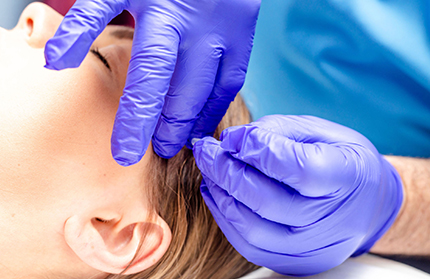
Are you someone who is anticipating knee replacement surgery? Did you know that exercising and strengthening your knees and the muscles around them before your operation helps in your healing process after the operation? Some of the exercises you should practice before surgery are: leg raises (both on your sides and on your back), clamshells, chair push-ups, stomach kickbacks and standing on one leg to increase your balance and overall stability. These are ways you can build your body up before surgery, but what about afterward?
Many patients who have knee replacement surgery want to resume their daily activities as soon as possible and most of them are able to do that and more! It all depends on you and your willingness to follow the physical therapy treatment set out for you to do. Roughly speaking, your recovery period will take about three months to about a year depending on your progress in your physical therapy. The more you can push your body a little extra and expect it to do what it is designed to do, the quicker your recovery and the benefits will last you for years to come.
The day of surgery, shortly after you get back from the recovery room, your physical therapy begins. The nurse or physical therapist will have a walker or a set of crutches with him and you will be asked to take a few steps using the walker or crutches. You will be able to use whichever form of assistance is more comfortable for you. The therapist will also show you how to get in and out of bed and how to properly use the walker or crutches to assist you during your recovery period better. He may also ask you to show him how to perform these tasks so that he can have a better understanding of your strength and adaptability to your temporary, yet new situation. The physical therapist will also give you some exercises you can do right there in the comfort of your hospital bed. These exercises will increase circulation through your legs to prevent blood clots and they will strengthen your knee muscles. Some of the exercises may include: Straight Leg Raises, Sitting- Supported Knee Bends, Ankle Pumps, Bed-Supported Knee Bends and Knee Straightening Exercises.
The day after surgery, physical therapy continues with a short walk and trying out a few stairs. This process will continue until you are discharged from the hospital. You will also discuss a “plan of attack” for your recovery with your surgeon and the physical therapist.
When you are discharged, you will most likely be admitted to a local rehabilitation center. Some of the movements you should be able to make with your knee (s) are the following:
- Get in and out of bed and out of the seated position using the walker, cane or crutches.
- Bend your knee at a 90-degree angle – this is very important because it helps you in your sitting and standing.
- Get dressed on your own and bathe yourself
- Use the walker, cane, or crutches on an as needed basis
- Be able to walk about 25 feet and climb stairs using the walker, cane and crutches as needed.
You will see more progress as you continue your daily physical therapy treatment during the few short weeks you are at the rehab center. Some of these exercises for your recovery have already been mentioned earlier in the post. But other exercises may include: walking with gradually more of your body weight distributed evenly onto your legs as well as going up and down stairs. At first, you will be allowed to use a cane, walker, or crutches, but as you gain more stability, you will depend on those devices less and less. Some other advanced exercises that you will be asked to include in your therapy is the Assisted knee bend, the Standing Knee Bend and riding a stationary bike. All of these exercises add some resistance to your knee and naturally make it work a bit harder to become stronger and more flexible.
It is very important that you continue all of the exercises that your physical therapist instructs you to do, especially after you are released from the rehabilitation center. It has been proven that patients that have had knee surgery and have been faithful in their physical therapy exercises at home have had the fastest and most productive recoveries than people who did not complete the exercises at home. Finding time to perform the exercises may be a challenge for you, but you can do it and your knees will thank you for it!

